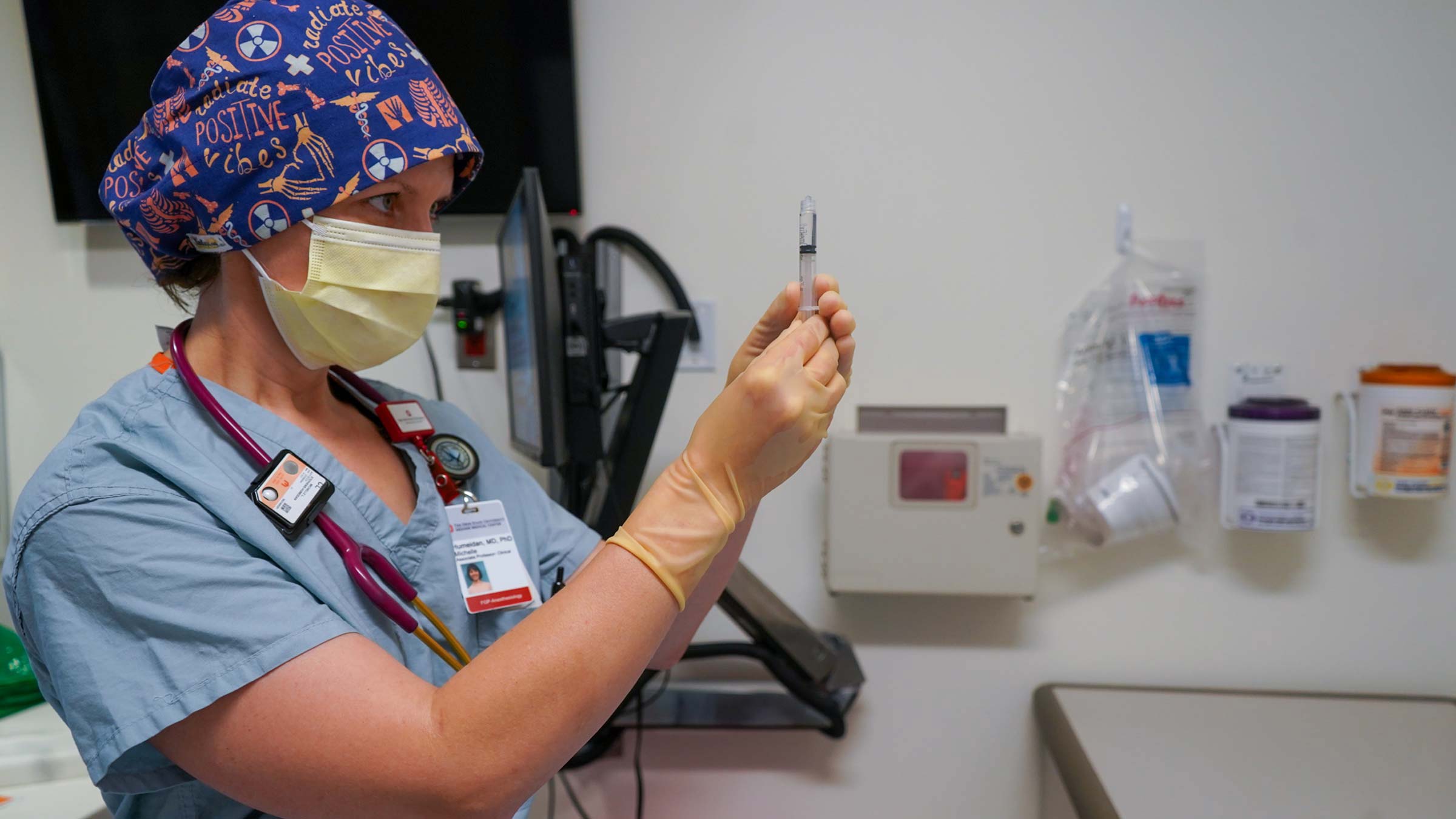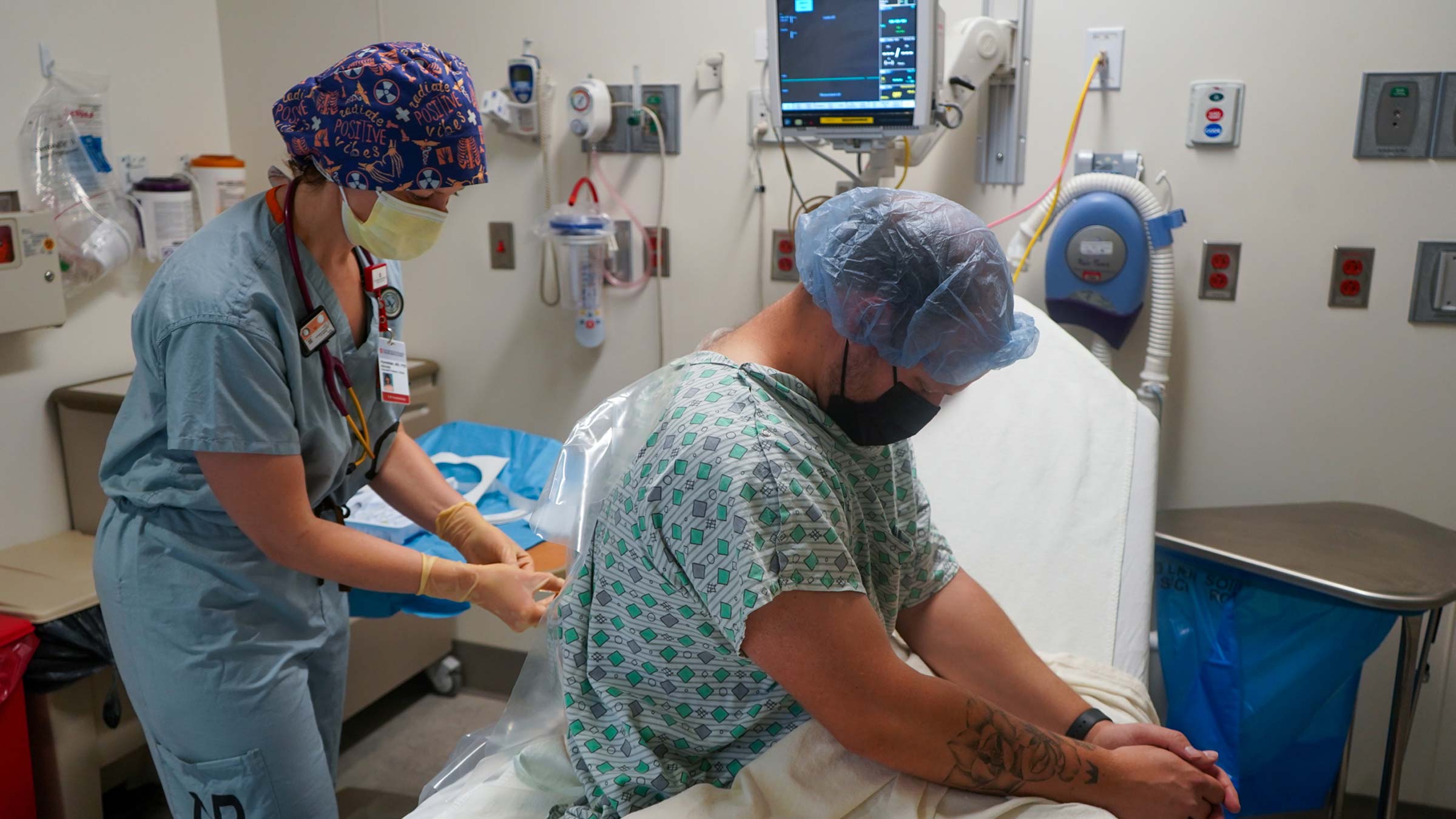
Effective pain management is critical to surgical recovery. In the past decade, however, this has often relied heavily on opioid-based medications that can cause side effects that slow physical recovery and put patients at risk for pain medication dependency and addiction.
Experts estimate that as many as 1 in 5 patients will need opioid-based pain medications long-term after surgery. This is especially concerning in Ohio, where misuse, addiction and drug diversion in the community has reached epidemic proportions.
A program at The Ohio State University Comprehensive Cancer Center – Arthur G. James Cancer Hospital and Richard J. Solove Research Institute (OSUCCC – James) and The Ohio State University Wexner Medical Center takes a radically different approach to post-surgery pain management focused on maximizing non-opioid techniques first, using opioids only as a back-up option.
Anesthesiologist Michelle Humeidan, MD, who leads the initiative, says that non-opioid pain-management options can result in less pain, less nausea, shorter hospital stays and reduced costs.
The OSUCCC – James launched the enhanced recovery pain management initiative in 2015 as a pilot project for patients undergoing breast reconstruction surgery after cancer treatment. The initiative has since expanded into more than 10 additional surgical service lines throughout the OSUCCC – James and the Ohio State Wexner Medical Center.
Dr. Humeidan notes that hospital data show a consistent 50% reduction in opioid pain medication use among hospitalized surgery patients since inception. This reduction remains consistent in surgical recovery at home.
“This is remarkable because it shows we can achieve excellent pain control while being mindful about the opioids we use at the hospital. This means patients won’t return to the community with opioid-based medications that aren’t really needed, which could then potentially add to the opioid abuse epidemic in this country, especially here in Ohio where this is a very significant problem,” Dr. Humeidan says.

Enhanced recovery process for pain management
This enhanced recovery approach focuses on building a pain-management strategy before, during and after surgery to help patients recover faster.
The first step is gaining a detailed understanding of the patient’s medical history and past need for pain medications, as well as any history of addiction. This allows the clinical team to customize the pain management plan based on the patient’s individual medical history and risk factors. This team-based approach to pain management starts well before surgery day and continues to provide support through the patient’s recovery.
“We build a plan for each patient with this mindset upfront of opioids as a backup option only — not the first, automatic option,” Dr. Humeidan says.
This includes things like using acetaminophen before surgery and, in the operating room, using regional blocks or neuroaxial blocks — such as an epidural for pain control — and other non-opioid pain medicines. The medical team also uses proactive behavioral techniques, medical massage and relaxation techniques to aid in recovery.
Working ahead of post-surgery pain
“After surgery, we are aggressively proactive to prevent pain and keep pain levels low. This is a complete change from the way things used to be, where we waited for patients to express their need for pain medication before giving it,” Dr. Humeidan says. “With the enhanced approach to surgical recovery, we work ahead of the pain to keep it managed with non-opioid drugs.”
Opioid-based medications, while highly effective, can slow a patient’s recovery process by delaying the body’s systems from “waking up” post-surgery. Using non-opioid pain- management methods also can reduce patients’ risk of nausea, difficulty breathing and gastrointestinal tract slowness.
“By changing the pain-management strategies we use during surgery, we can reduce the number of patients who would need opioid-based pain medications long-term. This can help break the cycle of addiction, misuse and diversion in our community,” Dr. Humeidan says.
Dr. Humeidan estimates that 12,000 patients at Ohio State have been treated with the enhanced surgical recovery approach to pain management since the initiative’s inception. She hopes other hospital systems will consider adopting this shift in mindset toward pain management as a quality-improvement initiative.

Patients like Britt Collier-Gibson, who underwent numerous surgeries as part of treatment for breast cancer, say they welcome this opioid-sparing approach to pain management.
“When I thought about healing, I thought about not just the medicine, but I thought about my lifestyle. I thought about what would be healthy for me,” Collier-Gibson says. “I think it's great that some places are trying to cut back on opioids. The data's out. I think probably all of us know someone who's been affected by that, and it's terrifying.”

The choice is clear
Our experts develop and deliver the most advanced targeted treatments leading to better outcomes and more hope.
Learn More




